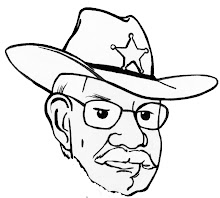Scientists say that criminals leave something of themselves behind at every crime scene and also take part of the crime scene away with them. The investigator's task is to develop the art and science of detecting that unseen evidence.
Detectives from the sheriff's office scour the house where a young woman's body was found. The pathologist says she's been beaten, probably with fists, but her death was caused by a stab wound which severed the aorta. She bled to death. She'd also been raped. Evidence was collected and stored at the State Crime Lab.
The dead woman's friends all say the killer was Bernard, the victim's ex-boyfriend. Detectives seem to agree. Bernard does not have a good alibi, but there is no hard evidence placing him at the crime scene. It's a stalemate.
Five years pass with no new developments. Then one day the case officer reads a newspaper article about a man convicted of raping a blind woman in Florida. This is the very first case in the U.S. in which DNA (deoxyribonucleic acid) is used to convict. In the Florida case, the DNA pattern in semen collected from the victim matched the DNA pattern from the suspect's blood sample.
Based on new technology, the local case is reopened. Now there's enough probable cause for a circuit court judge to sign a search warrant, authorizing deputies to take Bernard to the hospital and have a blood sample drawn. Bernard isn't too happy with this, but he has no choice.
The suspect's blood and the "foreign fluid" from the crime scene are both sent to Lifecodes Corp. in Stamford, Connecticut, the lab that pioneered the science of identification by DNA matching.
Remember, this is early on in DNA science. Back then it took months to get back a lab report. But when the report does arrive it shows the DNA pattern from the sample of "foreign fluid" collected at the crime scene matches Bernard's blood sample.
As the trial date approaches, the prosecutor says this will be one of the first DNA cases since Florida's landmark case. Bernard keeps saying he's innocent. His arrogance is surpassed only by his ignorance — until lawyers tell him about the DNA case in Florida.
"We're going to strap you in the electric chair, Bernard," the prosecutor tells him shortly before the trial.
Bernard thinks it over, but continues to stonewall it. Defense lawyers try to get him to understand that if he goes to trial he faces a high probability of execution. But if he pleads guilty, the penalty can be no greater than life in prison.
With less than an hour until the trial begins, and with a vision of sitting in "Sparky," South Carolina's electric chair looming in his mind, Bernard's cocky attitude fades. That morning in court Bernard enters a plea of "guilty." He gets "life without parole." That's still better than what the victim got.





No comments:
Post a Comment